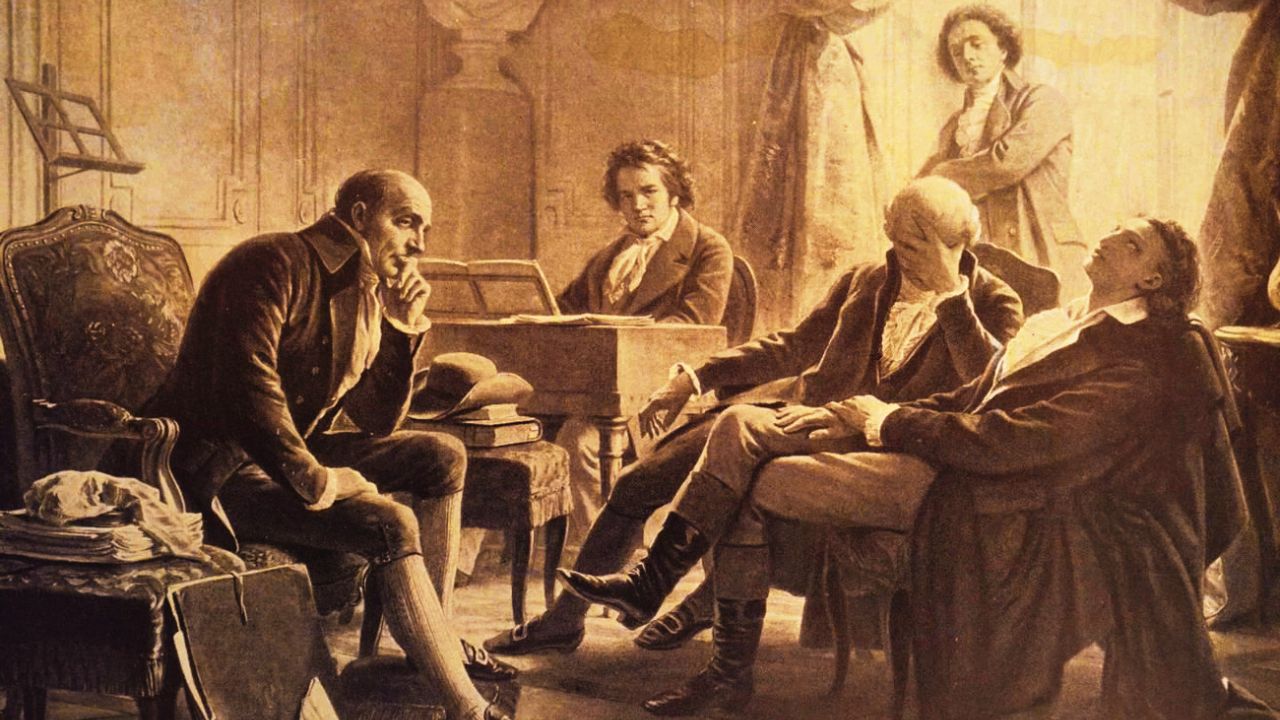As a young violinist, I remember the pure joy I felt playing Ludwig van Beethoven’s “Ode to Joy” from his Ninth Symphony.
The iconic fourth movement is a celebration of togetherness, but it’s important to remember that Beethoven also poured his feelings of despair into this final symphony.
Despite experiencing hearing loss in his 20s and becoming deaf in his 30s, Beethoven continued to compose some of his greatest and most enduring pieces. Now, researchers are one step closer to understanding the troubled genius’ mysterious ailments by analyzing the locks of his hair.
Beethoven’s Wish for Understanding
Beethoven expressed a desire for the public to understand and share his health issues. Time has unfortunately lost his doctor’s notes, but scientists have discovered a new method to understand his condition. Last year, researchers sequenced Beethoven’s genome from the locks of his hair, opening up new avenues for exploration.
Lead Poisoning Revealed
A recent analysis of Beethoven’s hair has shown that the composer experienced lead poisoning toward the end of his life. Tests revealed incredibly elevated levels of lead, arsenic, and mercury in two of his locks.
Researchers believe that lead-sweetened wine, a common practice at the time, likely caused the lead poisoning. While the lead poisoning may not have been enough to kill Beethoven directly, it could have contributed to his well-known gastrointestinal issues and deafness.
Connecting suffering and music
Understanding the factors that led to Beethoven’s death due to kidney and liver diseases could also provide insight into how the composer transformed his pain into music.
As Beethoven scholar William Meredith notes, “People say, ‘The music is the music; why do we need to know about any of this stuff?’ But in Beethoven’s life, there is a connection between his suffering and the music.” By exploring the composer’s health struggles, we may gain a deeper appreciation for the emotional depth and complexity of his works.
Solar activity and auroras
In other news, a rare spike in solar activity could lead to dazzling auroras appearing in the skies over locations as far south as Alabama this weekend. Scientists at the Space Weather Prediction Center have observed multiple flares and coronal mass ejections erupting from a cluster of sunspots that measures 16 times the diameter of Earth.
While the forecasted solar storm has the potential to disrupt the power grid and communications on Earth, experts agree that there is no need for people to take extraordinary measures to prepare for space weather.
However, it might be worth taking photos of the sky with your phone, as your camera may be able to capture the mesmerizing dancing lights of the aurora borealis.
Ancient Lava Tubes Sheltered Early Humans
Millions of years ago, lava flows on Earth created a network of vast subterranean tunnels called lava tubes, which provided a perfect place for our Neolithic ancestors to beat the heat.
Researchers in Saudi Arabia have uncovered carvings of images showcasing stick-figure humans alongside animals such as dogs and sheep on the walls at Umm Jirsan.
These artifacts have helped archaeologists piece together the story of the people who sought refuge in the lava tubes as early as 7,000 years ago during the Stone Age, as well as how they adapted to such arid environments.
Earth’s Magnetic Field and the Rise of Complex Life
Strange creatures began appearing on Earth more than 500 million years ago, and scientists now think it’s because Earth’s protective magnetic field nearly collapsed. After this event, animals with strikingly odd fan, doughnut, and tube shapes appeared in the fossil record, representing the first complex animals on the planet.
The weakening of Earth’s magnetic field 591 million years ago potentially allowed for an increase in oxygen in the atmosphere, paving the way for the evolution of more complex life forms.
The Silent Marine Graveyards
A rare event is transforming the Great Barrier Reef, as well as reef systems around the world, into silent marine graveyards. Rising ocean temperatures amid the climate crisis are driving the fourth mass coral bleaching event since the late 1990s, causing unprecedented levels of coral die-off.
Kate Quigley, principal research scientist at Australia’s Minderoo Foundation, warns, “What is happening now in our oceans is like wildfires underwater. We’re going to have so much warming that we’re going to get to a tipping point, and we won’t be able to come back from that.”
From unraveling the mysteries of Beethoven’s health through his hair to understanding the impact of Earth’s magnetic field on the evolution of complex life, science continues to provide us with fascinating insights into the world around us.
As we grapple with the consequences of climate change, such as the devastating coral bleaching events in our oceans, it’s crucial that we remain informed and engaged in the scientific discoveries that shape our understanding of the past, present, and future.
The Information is Taken from AOL and Yahoo News












































